
(Below is a snippet of Gamification Book: Actionable Gamification – Beyond Points, Badges, and Leaderboards. If you like this blog post, you will LOVE the book.)
The 8th Core Drive of Octalysis Gamification
For a video walk-through, check out: Episode 17, Loss & Avoidance
Loss and Avoidance is the eighth and final core drive in my Octalysis Framework. It motivates through the fear of losing something or having undesirable events transpire.
A concept within many popular games is to stay alive in order to advance to the next round. Depending on the game’s design, dying or injuring your character means that you’re now forced to start over or lose something significant – be it coins, money, the number of lives you have, or other setbacks that make it more difficult to reach the Win-State.
This aversion towards loss is obviously not limited to games. There are many situations in the real world where we act based on fear of losing something that represents our investment of time, effort, money, or other resources. To preserve our ego and sense of self, Core Drive 8: Loss & Avoidance sometimes manifests itself through our refusal to give up and admit that everything we have done up to this point has been rendered useless.
Even new opportunities that are perceived as fading away can exhibit a form of Loss & Avoidance. If people do not act immediately on this temporary opportunity, they feel like they are losing the chance to act forever.
A common example can be seen in the coupons that arrive regularly in the mail. Let’s say you receive a coupon that gives you a 10% discount to a popular chain store that you have no interest in visiting, and the coupon is labeled to expire on February 12th.
Your brain may be absolutely certain that, if you let the coupon expire, the very next month you will receive the exact same coupon that expires on March 12th. But you might get an annoying feeling that you are somehow losing something if you don’t use the coupon before the expiration date. Rationally it shouldn’t matter, but you are compelled to think about the offer a little more. As a result, you become a bit more likely to go to the store for a discount that you may not truly care about.
Cropping your Losses in Farmville
Many social games effectively employ Core Drive 8: Loss and Avoidance to motivate players towards taking the Desired Actions. In the now familiar example of Farmville, if we look at the early part of their onboarding stage, we can see that avoidance design was already integrated into the system, inducing users to “log in” multiple times each day.
The first few minutes of Farmville seems very positive as the player spends time creating their avatar and starts working on their farm with an initial pool of free *Farm Cash*. However, Farmville soon demands that each player maintain their crops and livestock through routine farming chores – mostly in the form of coming back and clicking on the crops and livestock to harvest their products.
If you don’t return to reap your harvest within a given number of hours, as determined by the crops’ profiles (you can choose which crop to plant, which plays into Core Drive 3: Empowerment of Creativity & Feedback), you will lose your invested hard work and be shown demoralizing images of crops withering and dying. This mildly depressing incident upsets the user, compelling them to log back in frequently to keep their crops alive. The player becomes proactively involved in avoiding this negative outcome.
When players lose their crops, it not only costs them Farm Cash to replace but also their time, as they have to replant and maintain new crops again. Each time you see the discouraging images of dead crops, you are hit with the triple whammy of having lost your time, effort, and resources.
Many years ago I was astonished at how effective this design could be, as my technology abhorrent mother suddenly became obsessed with playing Farmville. Back then, my mother was the type of person who thinks that technology is a source of evil that is polluting society and crippling authentic relationships; she still barely checks her email.
But in 2009, due to her close friend’s enthusiastic recommendation – a nice example of Core Drive 5: Social Influence & Relatedness, my mother signed up on Facebook and started to play Farmville. The beginning of the Onboarding phase was smooth and fun, as she used the game to relax her mind and connect with her friends.
However, after a few months of playing, my mother would sometimes wake up at 5:00am in the morning simply to harvest her crops and prevent them from withering. It became so bad that when my mother needed to travel out of town, she would call up my cousin and ask if he could log into her Facebook account and help manage her farm. She needed to make sure her crops didn’t die. (Though she also used to ask me, being a son that was lacking in “{chinesefont}孝{latinfont}” as discussed in Chapter 5, I eventually deferred the responsibility so I could focus on my “other” important work).
At the time, this blew my mind. I initially thought the reason for most people to play games was because they had too many responsibilities in the real world and needed to immerse themselves into a fantasy world to escape those responsibilities. However, here you have a brand new set of virtual responsibilities that add on even more stress and anxiety to daily life. It didn’t make any sense.
Of course, today I understand the nature and power of Black Hat Motivation. For a period of time, Farmville was able to successfully increase its Daily Active Users Metrics and lower short-term turnover with this type of Loss & Avoidance design. That is, until users hit a “Black Hat Rebound,” where they eventually burn out and find the courage to pursue freedom outside of Farmville.
Flipping other Core Drives Off
Core Drive 8: Loss & Avoidance complements many of the other Core Drives for an interesting reason: often it manifests as the reversal of the other Core Drives. You don’t want something bigger than yourself to fall apart (Core Drive 1), hence you act; or you don’t want to look like a loser in front of your friends (Core Drive 5), hence you make a purchase.
Some may argue that this doesn’t constitute a separate Core Drive. As an example, critics might point out that people are driven back to Farmville because they want to feel a sense of accomplishment or ownership and that the loss of either feeling is simply the removal of these drives. However, from a design standpoint, it is important to consider Loss & Avoidance as its own Core Drive.
This is because gaining something and preventing a loss is incredibly different from the standpoint of motivation. Studies have shown over and over that we are much more likely to change our behavior to avoid a loss than to make a gain. It forces us to act differently and plays by different mental rules. In fact, Nobel Prize winner Daniel Kahneman indicates that on average, we are twice as loss-averse compared to seeking a gain. This means that we have a tendency to only take on a risk if we believed the potential gain would be double the potential loss if the risk were realized.
Through using the Octalysis Framework, this differentiation improves behavioral design by specifically identifying opportunities to integrate proactive loss-avoidance mechanics that generate a more subtle set of motivational dynamics.
A Caveat: Avoiding the Avoidance
One caveat in using Core Drive 8: Loss & Avoidance is that the user must know *exactly* what they should do to prevent the undesirable event from happening. As mentioned in Chapter 10 on Scarcity & Impatience, if a loss-focused message is simply there by itself, but it is not intuitively obvious what the user needs to do, it often backfires – the Core Drive 8 becomes an Anti Core Drive and the user goes into denial mode. The brain irrationally concludes, “Since I don’t know how to deal with it, it’s probably not that big of a problem anyway.” *Status Quo Sloth*, which we will learn about later in this chapter, then dominates over the motivation towards loss-prevention.
A study done by health researchers Howard Leventhal, Robert Singer, and Susan Jones asked students to read pamphlets that describe the dangers of tetanus infection. There were three groups of students in the experiment: the first group received the warning pamphlet, but without clear steps to prevent tetanus infections. The second group received the warning pamphlet along with a specific plan towards arranging a tetanus injection (a *trigger* towards the Desired Actions). The last group received the specific plan towards arranging a tetanus injection, but did not receive the high-fear warning pamphlet.
As you might expect, only the group that received *both* the high-fear warning pamphlet *and* the plan towards the remedy became highly motivated to take on the Desired Action. As mentioned in Core Drive 2: Development & Accomplishment, we only want to act if it makes us feel smart. If the user feels confused (hence stupid) when thinking about what to do regarding this potential threat, they would rather just dismiss it altogether instead of feeling incompetent over it.
As cleverly put by Noah Goldstein, Steve Martin, and Robert Cialdini, perhaps President Franklin Roosevelt’s famous quote should be amended into, “the only thing we have to fear is fear *by* itself”.
Game Techniques in Loss and Avoidance
You have learned more about the motivational and psychological nature of Core Drive 8: Loss & Avoidance, but to make it more actionable, I’ve included some Game Techniques below that heavily utilize this Core Drive to engage users.
Rightful Heritage (Game Technique #46)
A common game technique that utilizes Core Drive 8: Loss & Avoidance is something I call the *Rightful Heritage.* This is when a system first makes a user believe something rightfully belongs to them (remember expectations matter a lot?), and then makes them feel like it will be taken away if they don’t commit the Desired Action.
The Rightful Heritage game technique can sometimes be implemented in a simple word change. Have you ever been on a website, where you click around before you stumble upon the conversion page (“sign-up” or “purchase”), and then see some offer that reads, “Purchase now and instantly get a 20% discount!” or “Sign-up now to receive 3000 free credits”? Often, we dismiss these offers as gimmicky, and a poor appeal to Core Drive 4: Ownership & Possession, so we ignore them.
However, some sites integrate game techniques into the experience by harnessing our loss aversion tendencies. Imagine as you click around a website, there is a little popup widget that says, “Great! Your actions have earned you 500 credits!” As you click on more places, it will continue to say, “Great! Your actions have earned you 1500 credits!” Finally, when you get onto the landing page, the text reads, “You now have 3000 credits. Sign-up to save your credits for later!”
Even though this is the exact same result as “Sign-up now to receive 3000 free credits,” the experience design makes signing up feel more compelling. Previously, the hassle of signing up did not justify the 3000 credits, but now it feels like you have “earned” these credits from your “hard work” of clicking around the site and the idea of losing what you have rightfully obtained feels absurd. As a result, there is a much higher chance of you signing up.
Evanescent Opportunities (Game Technique #86) and Countdown Timers (Game Technique #65)
An Evanescent Opportunity is an opportunity that will disappear if the user does not take the Desired Action immediately. One of the biggest sensations in the game *Diablo III* is a little monster called a *Treasure Goblin*. The Treasure Goblin is an enemy creature that appears randomly, but runs away when being attacked instead of attacking the player. With a significant amount of Hit Points (HP, health, or life), players will all rush to attack the Treasure Goblin as it runs away. Defeating the Treasure Goblin will sometimes (but not often) result in great treasures. However, if the Treasure Goblin is not defeated within a certain time frame, it will jump into a portal and disappear.
In the real world, every limited-time offer that forces you to decide whether to buy the product or lose the offer forever uses this Game Technique. Used car salespeople love to tell you, “Look, I just had the biggest argument with my boss about how if you got the car at a deal like this today, you would be so happy that you would become a lifetime loyal customer. That finally convinced him! I couldn’t believe it! Now, of course there’s no real pressure for you to actually become a lifetime customer, but you have to take the deal today. If you walk away, I guarantee you my boss will quickly come to his right senses again and change his mind.”
You snicker because you know the tactics car salespeople use and automatically put up a mental guard against them. But what about charity fundraisers? “We just got a generous donor that said for every dollar we collect in the next hour, he will match it! Your donation dollar will serve double the impact!”
Evanescent Opportunities motivate us to act quickly for fear of losing a great deal. Matching well with this technique is the simple feedback mechanic called the *Countdown Timer*.
A Countdown Timer is a visual display that communicates the passage of time towards a tangible event. Sometimes the Countdown Timer is to introduce the start of a great opportunity, while at other times it’s to signify the end of the opportunity.
Countdown Timers ensure that users recognize the presence of the Evanescent Opportunity better than a simple expiration date because the user constantly sees the window of opportunity narrowing, establishing a sense of urgency in the process. Intuitively for this purpose, Countdown Timers should display the smallest time interval that is appropriate (more often that not – seconds), instead of showing longer intervals such as weeks or months.
Status Quo Sloth (Game Technique #85)
Sometimes Core Drive 8: Loss & Avoidance comes in the form of simply not wanting to change your behavior. I call this lazy tendency of behavioral inertia *Status Quo Sloth*.
Every once in a while, a startup entrepreneur will tell me, “Hey Yu-kai, there’s absolutely no reason why a customer wouldn’t use our product. We save them time, we save them money, and we make their lives better!” On lucky occasions, even the customer himself would say, “Yeah, there’s no reason why I wouldn’t use your product. It saves me time, it saves me money, and it makes my life better. I’ll definitely sign up tomorrow!”
For those who are experienced in launching new and innovative products, you might recognize that the key phrase here is “I’ll definitely sign up tomorrow.” More often than not, the true meaning of “tomorrow” is “never.” Not because the person isn’t being genuine, but due to the fact that with so many distractions in life, there simply won’t be enough motivation to perform the Desired Action.
As experience designers, our goal is to build Status Quo Sloth into the Endgame phases of our products by developing highly engaging activity loops that allow the user to turn Desired Actions into habits.
FOMO Punch (Game Technique #84)
On the other hand, in order to counter the Status Quo Sloth that is working against you, something I call the “FOMO Punch” might be implemented. FOMO stands for “Fear of Missing Out” and it’s trick is to apply Core Drive 8: Loss & Avoidance against itself.
In life, we fear losing what we have, but we also fear losing what we could have had. This fear of regret, when prompted correctly, can penetrate through the behavioral inertia of Status Quo Sloth and trigger the Desired Action.
When Steve Jobs wanted to recruit Pepsi executive John Sculley into Apple as the new CEO, he famously said, “Do you want to spend the rest of your life selling sugar water, or do you want a chance to change the world?”
Boom! That was a powerful FOMO Punch that prompted Sculley to think he would miss out on the opportunity of a lifetime if he “wasted” the rest of his career at Pepsi. He later remembers, “I just gulped because I knew I would wonder for the rest of my life what I would have missed.” (Ironically, Sculley’s lasting legacy would likely be known as the guy who fired Steve Jobs and ran Apple into the ground – just for Steve Jobs to return and resurrect).
As the context suggests, FOMO Punches can be very effective in the Discovery Phase of an experience when users are trying out a new experience. In contrast, the Status Quo Sloth technique plays a bigger role in the Endgame phase when the designer wants to keep the veterans in the system.
The Sunk Cost Prison (Game Technique #50)
Perhaps the most powerful and sometimes treacherous mechanism within Core Drive 8: Loss & Avoidance is what I call the Sunk Cost Prison. This occurs when you invest so much time into something, that even when it’s no longer enjoyable, you continue to commit the Desired Actions because you don’t want to feel the loss of giving up on everything.
Imagine a scenario where you played a game for a long time and it begins to become boring and meaningless. You ask yourself why you keep playing it, but subconsciously you realize that if you do quit the game, you will feel the pain of losing all the time, points, currencies, status, and customizations that you’ve invested. Quitting will result in that ugly sensation of admitting that you truly wasted hundreds of hours that ended up becoming nothing.
As a result, in order to avoid that depressing feeling of loss and emptiness, you instead convince yourself to use that powerful pristine sword to kill even more monsters, or tap into the two million coins you’ve earned with all your labor in an attempt to feel awesome again. Eventually you invest even more hours into the game and build up even more things to lose. You become trapped in a deadly spiral, and it can become quite depressing.
From a design standpoint, if you make sure the user is accumulating – and knows that they are accumulating – things that will be gone and wasted if they leave your system, it will be very difficult for the user to leave during the Endgame.
Sunk Cost Prisons, though powerful, adhere to the Black Hat principles of making users feel uncomfortable. As such, they should always be accompanied by White Hat Core Drives, (such as allowing users to recognize that they are actually helping the world and they shouldn’t give up the impact accumulated to that point). These technique should only be employed when the user has a quick urge to leave the system, such as being attracted to Black Hat Techniques used by other companies. (for instance, a special “limited” promotion that the user *must* sign up for.)
When you design your experience, you should think regularly about what makes users reluctant to let go and therefore stay in your system for longer.
Core Drive 8: The Big Picture
Core Drive 8: Loss & Avoidance is a powerful motivator that is bluntly utilized by all sorts of organizations and systems. Core Drive 8 generates Black Hat results such as a high sense of urgency and obsession. However, in the long-run this puts the user in a state of discomfort.
In many cases, Core Drive 8: Loss & Avoidance works hand-in-hand with Core Drive 6: Scarcity & Impatience because exclusivity and limited offers often come packaged with the anticipated fear of losing that exclusivity or having that offer fade away. These two Core Drives don’t necessarily have to coexist though. For instance, the Core Drive 6 game technique of Anchored Juxtaposition (GT #69) (where you provide users two options for completing a Desired Action, a combination of Core Drive 6 and 3) does not draw much strength from Loss & Avoidance.
Matched with Core Drive 7: Unpredictability & Curiosity, the emotional fear of Core Drive 8 becomes magnified and even more crippling. Interestingly, Daniel Kahneman’s insightful *Fourfold Pattern* shows that, in low probability *loss* events, we become risk-averse to prevent that small risk from happening. However, in high probability loss events where we are forced to choose a certain (100%) loss, or a 90% chance to lose $200 and a 10% chance to lose nothing, we become risk-seeking and choose the route where we can foresee a glimmer of hope. After all, fear is what motivates us to stay alive, but hope is what many of us ultimately live for.


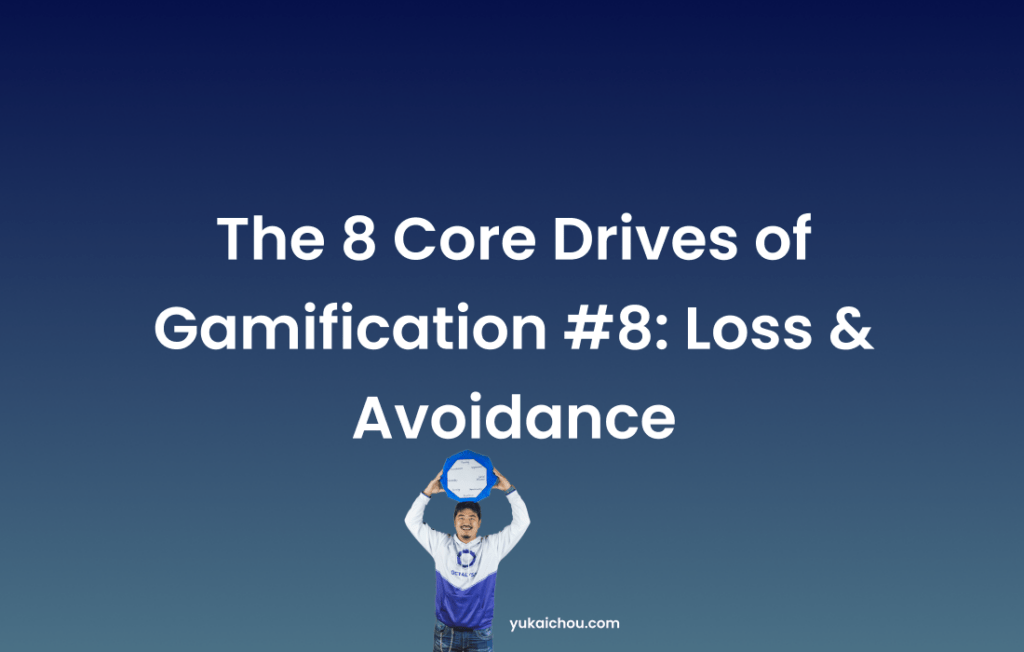

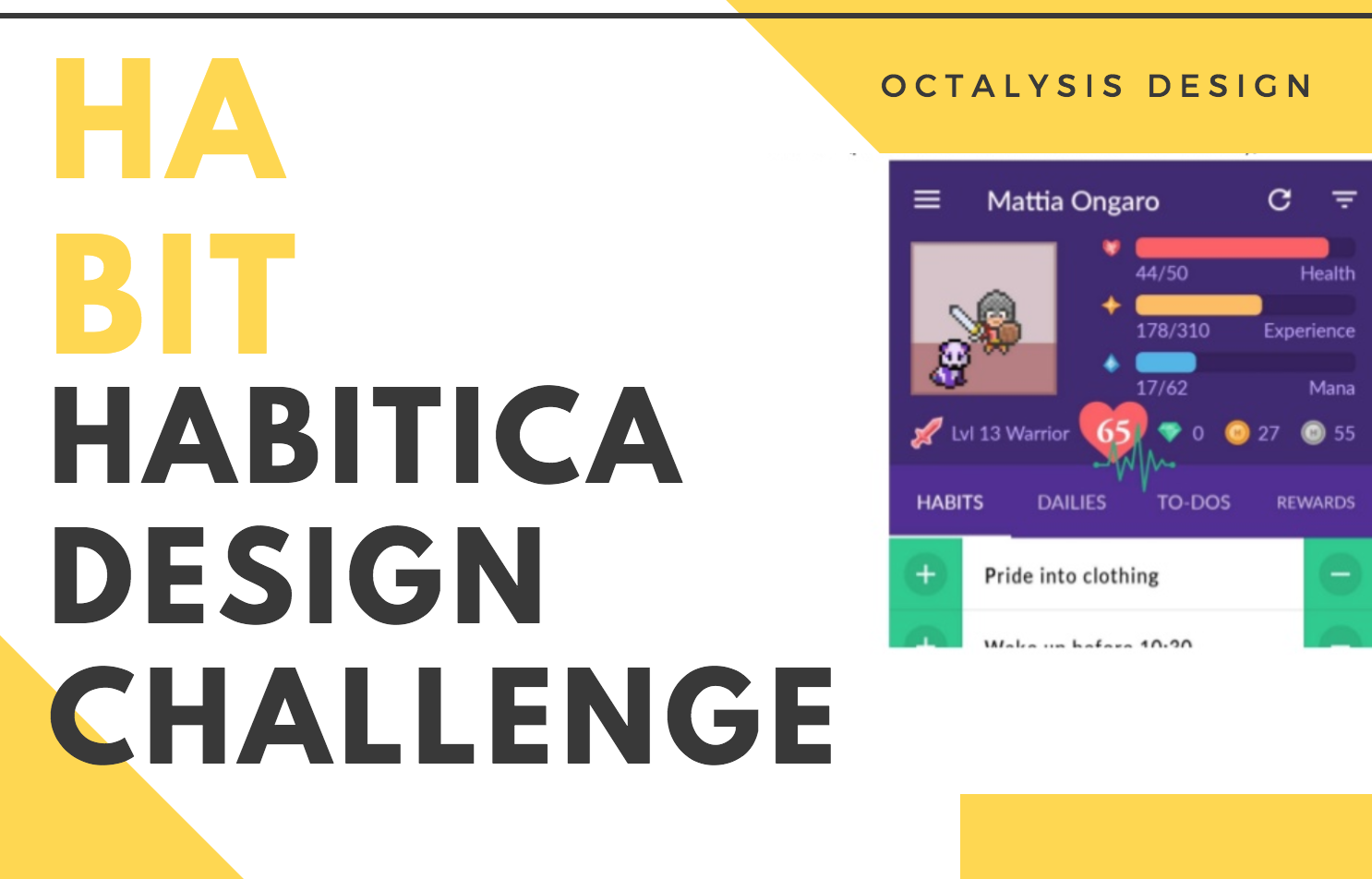
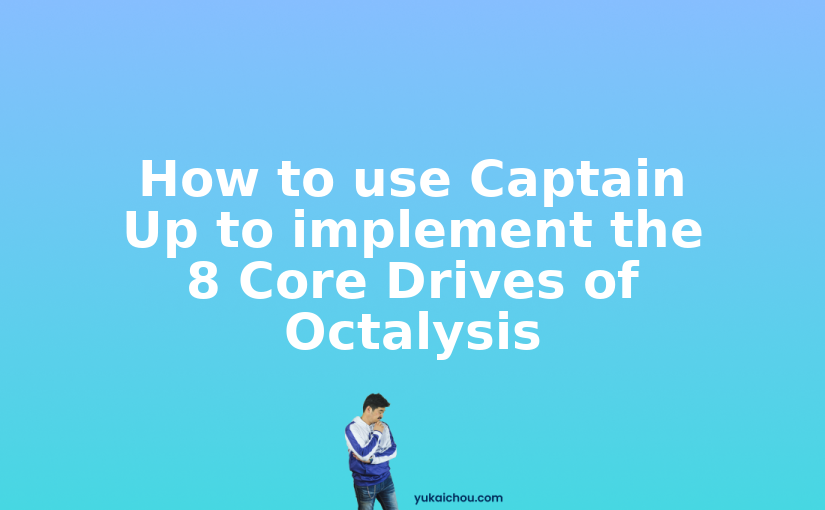

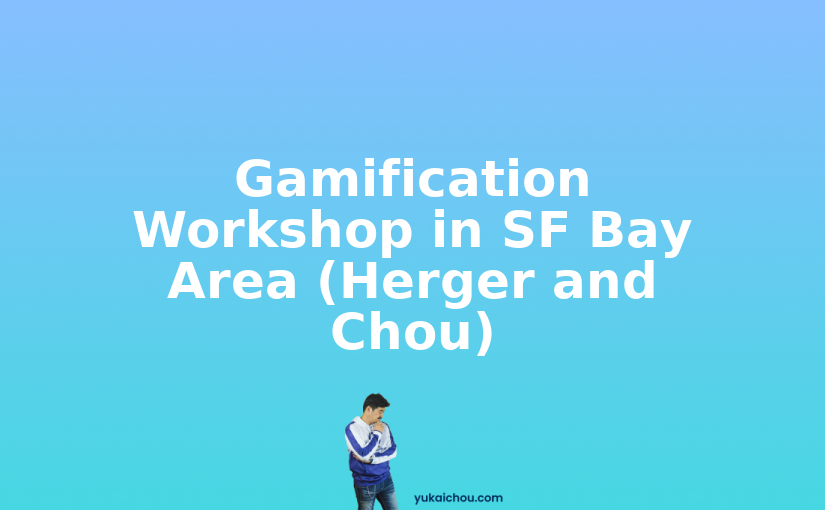

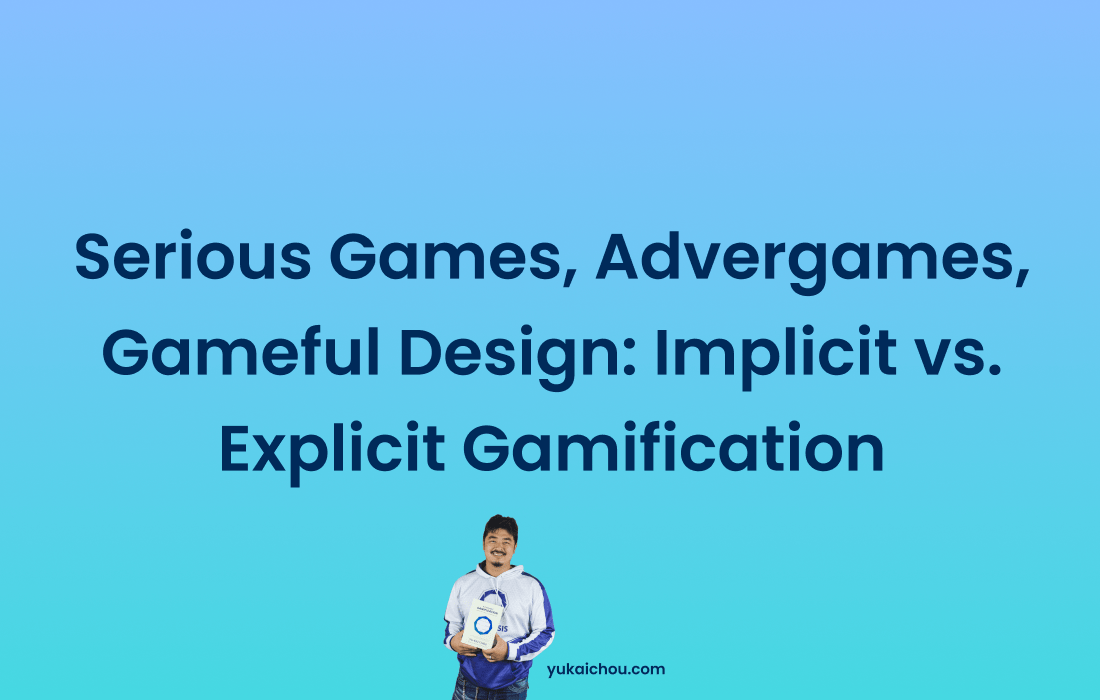
14 responses to “The 8 Core Drives of Gamification #8: Loss & Avoidance”
Violin dad’s thoughts… This is probably a CD that is too strong in our situation. Or rather, perhaps it could be toned down and/or shifted a bit. I understand the feeling of the “sunk cost prison” in the context of video games from personal experience. I agree that the real “cost” is by delaying quitting the video game since it takes away from living the real life. In the context of my daughter playing violin, sometimes I am sure she feels that if she were to quit the violin, she would feel no pain or remorse. However, I certainly would. We are already five years invested with time and money. (Truthfully, I am fine if she decides to drop violin… it would just be really unfortunate.) My opinion is that this is a bit different than quitting a video game. Quitting violin (or some other instrument) is losing out on some awesome potential life experiences and opportunities. We shall see! 🙂
What? No response, yet? j/k
Yu-Kai, have to admit that your analysis really, really strikes me this time! For such a simple concept you make it very apparent how strong CD8 is in its various incarnations. Great touch bringing in Lahneman’s video & work!
Further appreciate how you highlight that, though effective, users can end up with a terrible taste in their mouths if this Cd is used poorly.
I’m confused by this technique and wonder if it stops people thinking ahead as they are spending all their time trying to avoid loss
I like the FOMO technique. I am going to dream up ways to use it at work. I’ll post when I do.
Excellent!
I keep thinking on the Status Quo Sloth, specially when it is used as a tool to prevent veteran users quit the game.
Could someone offer examples when this tool has been successfully used in video games?
Thanks and stay awesome!
Brilliant example with coupons on web-site. Seems I know how to motivate kids ))
This is a tricky but powerful Core drive indeed.
I love the “it can change value systems and engineer motivation towards a win-state” part.
Thank you Yu-Kai
A disastrous consequence in the field of loss is at the technical level, when a user loses his game due to a bug in backup data.
“I got to level 60 and now I have to start all over again, disgusted, goodbye”.
I often see this with applications.
I would love to find a group to work or some sort of jump start that can help me this summer put this in the context of a chemistry classroom. I really think I can change the way chemistry is taught.
Hi I’d like to find out more what your thoughts are. Did you ever work on this ?
ImersiaThanks! Would love to check out your game when it’s ready 😉
Imersia Yu-kai Chou Look forward to it!
Thanks! Would love to check out your game when it’s ready 😉